Of bricks and crystals - OPOD
Of Bricks and Crystals - Understanding the Phenomenon
Have you ever walked along a sidewalk and noticed regular dark and white "rays" or lines radiating across the paved ground? These intriguing patterns may have caught your eye, leaving you wondering about their origin and significance. In this article, we will delve into the phenomenon of these mesmerizing optical effects and explore the connection between bricks and crystals.
The Paving Connection
One fascinating observation made by Mario Freitas of Universidade Tecnológica Federal do Paraná in Curitiba, Brazil, was the presence of dark and white rays or lines on the pavement. By closely examining the top of the image and slightly blurring the eyes, these lines become more apparent. The dark lines are particularly prominent when the image is processed to highlight only the joins between the paviers, ignoring their colors and tones.
Unraveling the Mystery
To understand why these dark lines appear, it is essential to examine the nature of brick joins in paved areas. The periodic pattern formed by the paviers or bricks plays a crucial role in generating these optical effects. While the specific bond in the Brazilian sidewalk is relatively complex, more common patterns can be observed in paved areas.
By observing the symmetry elements and contemplating how one would lay the bricks in a particular pattern, it becomes evident that the dark and light rays arise as the eye looks along directions of greater or lesser density of dark joins. For example, a high density of joins along a particular direction will appear dark, while lower densities will appear lighter. These variations in join density give rise to the striking patterns observed on sidewalks, walls, tiled roofs, and various other surfaces.
Exploring Crystal Lattices
Now that we have explored the connection between bricks and optical patterns, let's shift our focus to crystals. Crystals are three-dimensional periodic lattices composed of atoms, ions, or molecules. They exhibit unique optical properties and play a crucial role in generating patterns similar to those observed on pavements.
Within a crystal lattice, specific planes of high atom density, known as lattice planes, can be identified. These lattice planes determine the crystal faces and cleavage planes found in minerals and gemstones. Facets, or flat surfaces, of crystals tend to align with lattice planes of high density. On the other hand, directions of lower density are less likely to form facets.
Crystal Forms and Patterns
Various crystal forms exist, each characterized by a specific lattice structure. For instance, the cube, exemplified by rock salt, is a common crystal form. Other examples include the octahedron, found in minerals like fluorite and alum, and the cuboctahedron, observed in fluorite and galena.
To further understand the mesmerizing world of crystals, you can even try growing your own! By creating controlled conditions for crystal growth, you can witness firsthand the intricate lattice structures and fascinating optical effects that crystals exhibit.
In conclusion, the phenomenon of dark and white rays observed on pavements finds its origin in the periodic patterns formed by brick joins. These patterns give rise to variations in join density, resulting in striking optical effects. Similarly, crystals with their three-dimensional lattice structures and high-density lattice planes generate captivating patterns and optical properties. By exploring the connections between bricks and crystals, we gain a deeper understanding of the intricate optical phenomena present in our everyday surroundings. So, the next time you come across these mesmerizing patterns, take a moment to appreciate the fascinating interplay between light, materials, and symmetry that gives rise to such captivating visual displays.
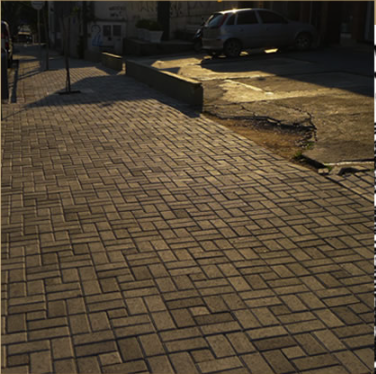
Of Paving & Crystals ~ Mario Freitas of Universidade Tecnológica Federal do Paraná was walking along a sidewalk in Curitiba, Brazil when he noticed regular dark and white 'rays' or lines radiating across the paved ground. They are most apparent by looking at the top of the image and blurring the eyes slightly. ©Mariao Freitas
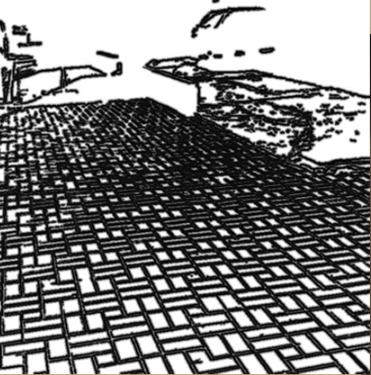
This image is processed to leave only the joins between the paviers and to totally ignore their colours and tones. The dark lines are even more evident. Somehow the dark brick joins are responsible.
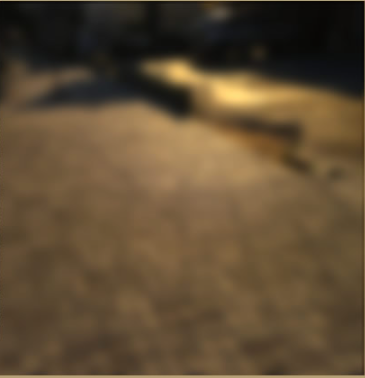
Deliberatly blurred to smooth out the brick joins. Some extra lines running from left to right now show up, probably due to the different darknesses of individual bricks.
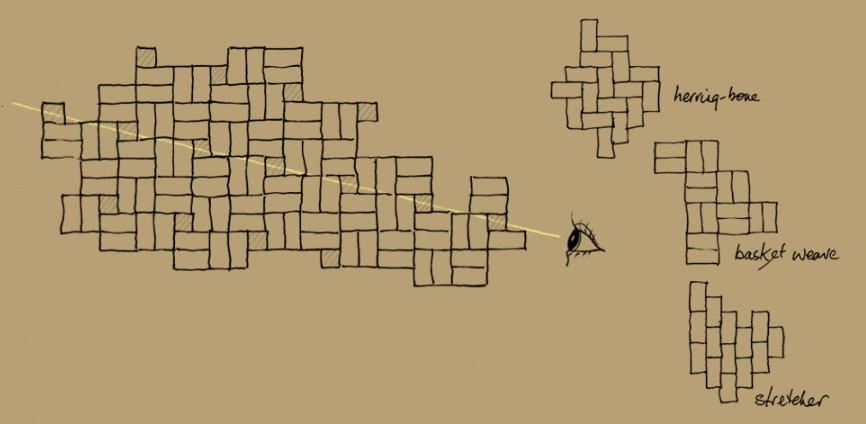
The paviers or bricks form a periodic pattern. In this case the bond is fairly complicated - more common ones for paved areas are at right.
Look for the symmetry elements and think how you would start to lay the Brazilian one.
The dark and light rays arise as the eye looks along directions of greater or lesser density of dark joins.
The yellow line is along a high join density - that direction will look dark. The small square bricks are shaded to emphasise the pattern. In reality the brick colours and tones are not systematic and do not generate the lines.
Look for patterns on siewalks, wall, tiles roofs.. ..everwhere.
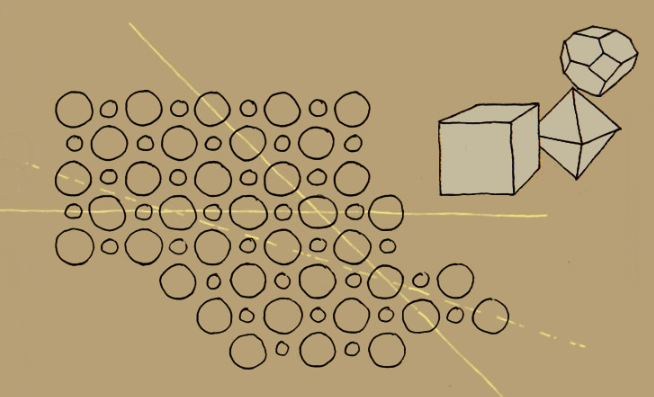
Crystals are 3D periodic lattices of atoms, ions or molecules.
The solid lines across this simple cubic crystal define lattice planes - if projected into 3D - of high atom density. Other planes exist in three dimensions.
Crystal faces follow lattice planes of high density as do mineral and gemstone cleavage planes.
Directions of lower density like the dotted one are less likely to form facets.
Three of the several possible forms of cubic lattice crystals. Facet directions follow free energy favoured planes through the lattice.
cube - rock salt
octahedron - fluorite, alum
cuboctahedron - fluorite, galena
Grow your own.
Note: this article has been automatically converted from the old site and may not appear as intended. You can find the original article here.
Reference Atmospheric Optics
If you use any of the definitions, information, or data presented on Atmospheric Optics, please copy the link or reference below to properly credit us as the reference source. Thank you!
-
<a href="https://atoptics.co.uk/blog/of-bricks-and-crystals-opod/">Of bricks and crystals - OPOD</a>
-
"Of bricks and crystals - OPOD". Atmospheric Optics. Accessed on November 26, 2024. https://atoptics.co.uk/blog/of-bricks-and-crystals-opod/.
-
"Of bricks and crystals - OPOD". Atmospheric Optics, https://atoptics.co.uk/blog/of-bricks-and-crystals-opod/. Accessed 26 November, 2024
-
Of bricks and crystals - OPOD. Atmospheric Optics. Retrieved from https://atoptics.co.uk/blog/of-bricks-and-crystals-opod/.